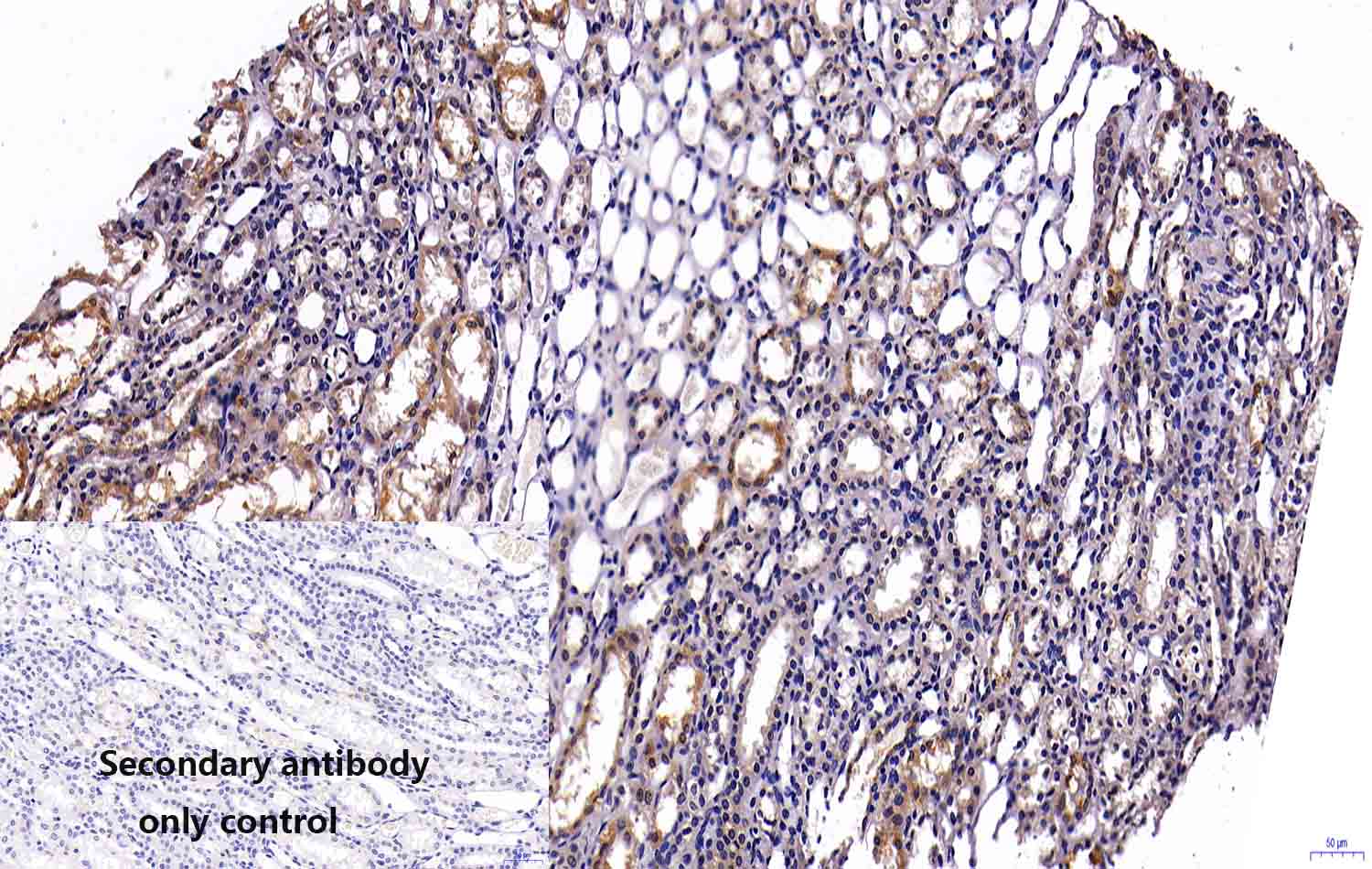
产品名称:Anti-CST3 Antibody, Mouse Monoclonal, F1T
克隆号:F1T
抗体亚型:/
经验证的应用:/
交叉反应:Predict reacts with: Human/Mouse/Rat
特异性:/
免疫原:Recombinant Human CST3 protein
制备方法:Produced in mouse immunized with CST3, and purified by antigen affinity chromatography.
来源:Monoclonal Mouse IgG
纯化:Immunogen affinity purified
缓冲液:Supplied in PBS, 50% glycerol and less than 0.02% sodium azide, PH7.4
偶联物:Unconjugated
浓度:Liquid
运输方式:This antibody is shipped as liquid solution at ambient temperature. Upon receipt, store it immediately at the temperature recommended.
储存条件:This antibody can be stored at 2℃-8℃ for one month without detectable loss of activity. Antibody products are stable for twelve months from date of receipt when stored at -20℃ to -80℃. Preservative-Free. Avoid repeated freeze-thaw cycles.
图片:
Figure1.Immunohistochemistry (Formalin/PFA-fixed paraffin-embedded sections) analysis of Monkey brain、Monkey kidney、Monkey prostate、Monkey testis、Monkey epididymis sections labelling CST3 with purified MA00636MuM10-F1T at 5ug/ml dilution . Heat mediated antigen retrieval was performed using Heat mediated antigen retrieval using citrate buffer (PH6.0). Tissue was counterstained with Hematoxylin. Mouse specific IHC polymer detection kit HRP/DAB secondary antibody was used at 1:2000 dilution. PBS instead of the primary antibody was used as the negative control.
别称:/
背景信息:Cystatin C. Cystatin C is a member of family 2 of the cystatin superfamily (1). It is involved in processes such as tumor invasion and metastasis, inflammation and some neurological diseases. It inhibits many cysteine proteases such as papain and cathepsins B, H, K, L and S (2, 3). All mouse tissues analyzed expressed Cystatin C, with relative levels similar to those of rat and human tissues. For all three species, brain and liver had the highest and lowest levels of Cystatin C, respectively, whereas kidney, spleen and muscle had the levels in between (4). The high degree of similarity in distribution and functional properties for mouse, rat and human Cystatin C indicates that a murine model should be relevant for studies of the human disease, hereditary Cystatin C amyloid angiopathy (4).
全称:Cystatin-C (CST3)


